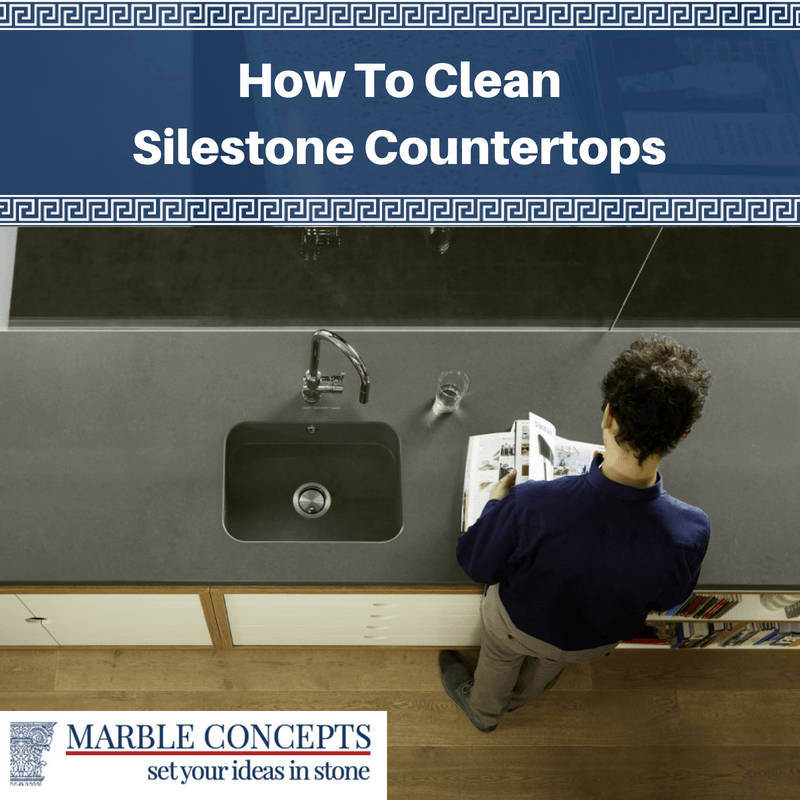Consistency in care is the important aspect with Silestone and that can be easily achieved through simple cleaning processes, as Silestone is known for its low maintenance quartz countertop products. The lasting beauty, luster and durability of Silestone can be preserved through Silestone’s cleaning recommendations for any number of stains. Food, oil, rust and watermarks can all be removed through the following solutions:
Cleaning Oil Stains
With oil stains, you can use any cleaner that is pH balanced and can be directly applied to your quartz countertops. In addition, there are cleaners that are designed for use on Silestone. Apply whatever product you choose directly on the oil stain. Allow it to set for several minutes. Take a soft sponge and gently rub the spot in a circular manner. Once clean, take a moistened cloth to remove any residual oil. Lastly, wipe the area dry with a soft cloth.
Everyday Food Stains
Food stains can pop up anywhere on a countertop, and they can be whisked away with simple, everyday cleaners, or ones that Silestone recommends. Apply the cleaner to the stain and allow it to remain there for a couple of minutes. Always use a non-abrasive sponge or soft pad to clean the area in circular movements over the stain. Once the area is clean, use a moistened cloth and remove any leftover debris or crumbs. Dry the surface with a soft, white cloth.
Removing Watermarks
Watermarks seem to be one endless countertop chore due to hard water and mineralization that can leave residual and permanent marks as well as spots on Silestone. These stains can be removed through several different processes, such as regular vinegar and baking soda, limescale removers, and hydrocloric acid, which should only be used on the countertops. Skip faucets and sinks as damage can occur.
Limestone removers should be spread with a soft pad, as opposed to anything abrasive, and rubbed on the countertop area in a slow and careful manner. Leave the remover on the stain for several minutes and then remove it with a moistened cloth. Complete the process by drying the area with a white cloth or smooth paper towels. Repeat the process, if necessary, in order to get rid of any of the limescale remover.
The baking soda and vinegar combination is made up of two equal amounts of both and is made into a paste. Allow it to remain on the watermark area for a good 10-20 minutes. The paste can then be removed with a soft sponge and cold water. Repeat the process if necessary and dry with a soft, white cloth.
Hydrochloric acid is simply sprinkled on the watermark area and should remain there for around a minute and finally rinsed with water. Rinse again, if needed, and dry the area with a soft cloth.
Rust Marks
Rust marks can really take away from the beauty of a Silestone countertop, but they can be removed if the right process is followed. Use a recommended rust cleaner, or one that is safe for quartz countertop use. Apply the cleaner to the rust stain and allow it to stay on the stained area for a couple of minutes. Take a soft pad or sponge and use it in a circular motion over the rust stain. If there is any of the rust cleaner left, be sure and remove it with a moistened cloth. Then gently dry the area with a cloth. If the rust still remains, think about using a cream product that is designed to remove rust in a gentle manner.
Silestone is a quartz material that is pretty much stain resistant, but any stains that do occur can be quickly remedied with the right cleaning process. Should you not be sure of what care is necessary to alleviate a particular stain situation, complete the online contact form and an Silestone representative will get back to you with the answers you need to help you keep your Silestone countertops clean.






